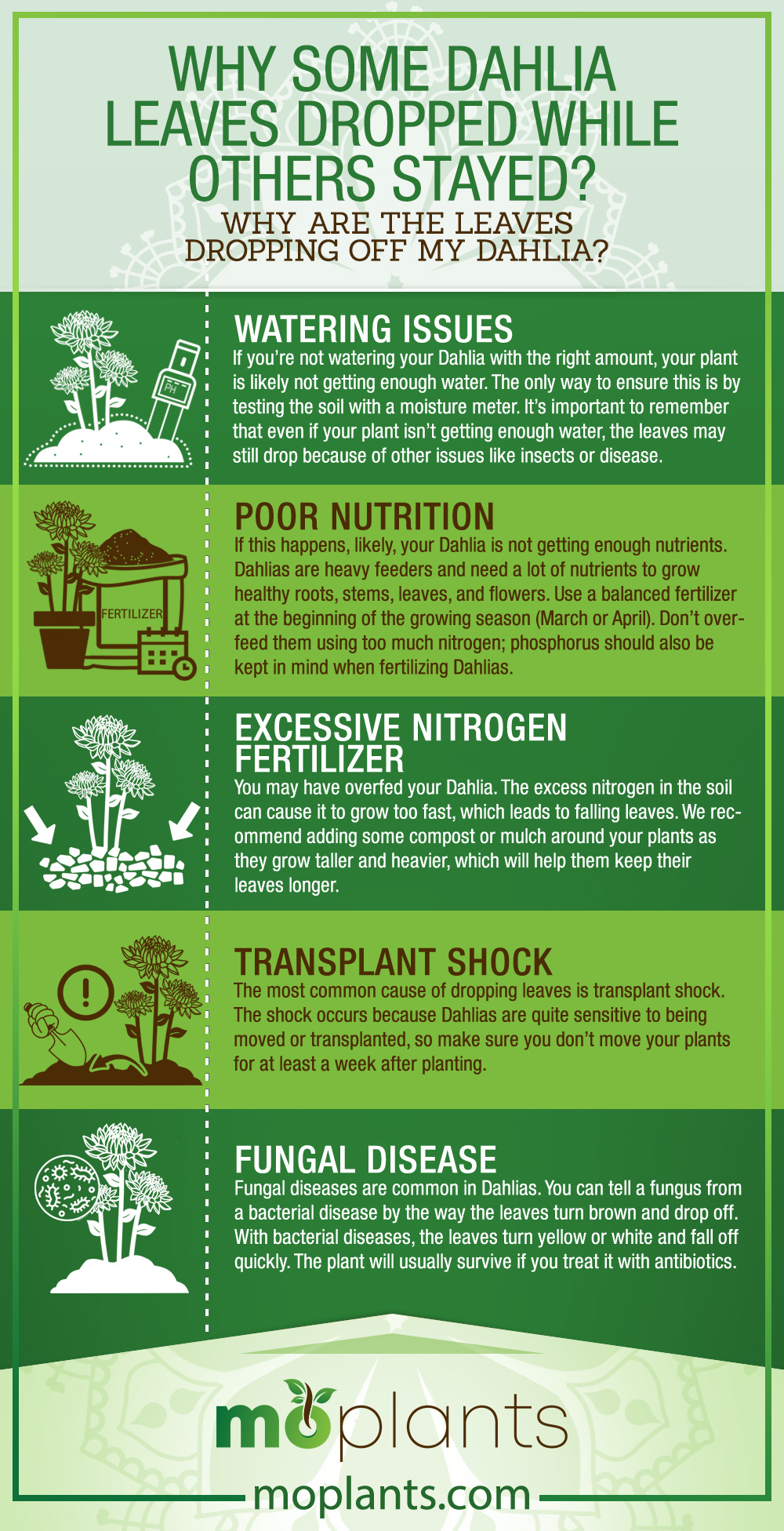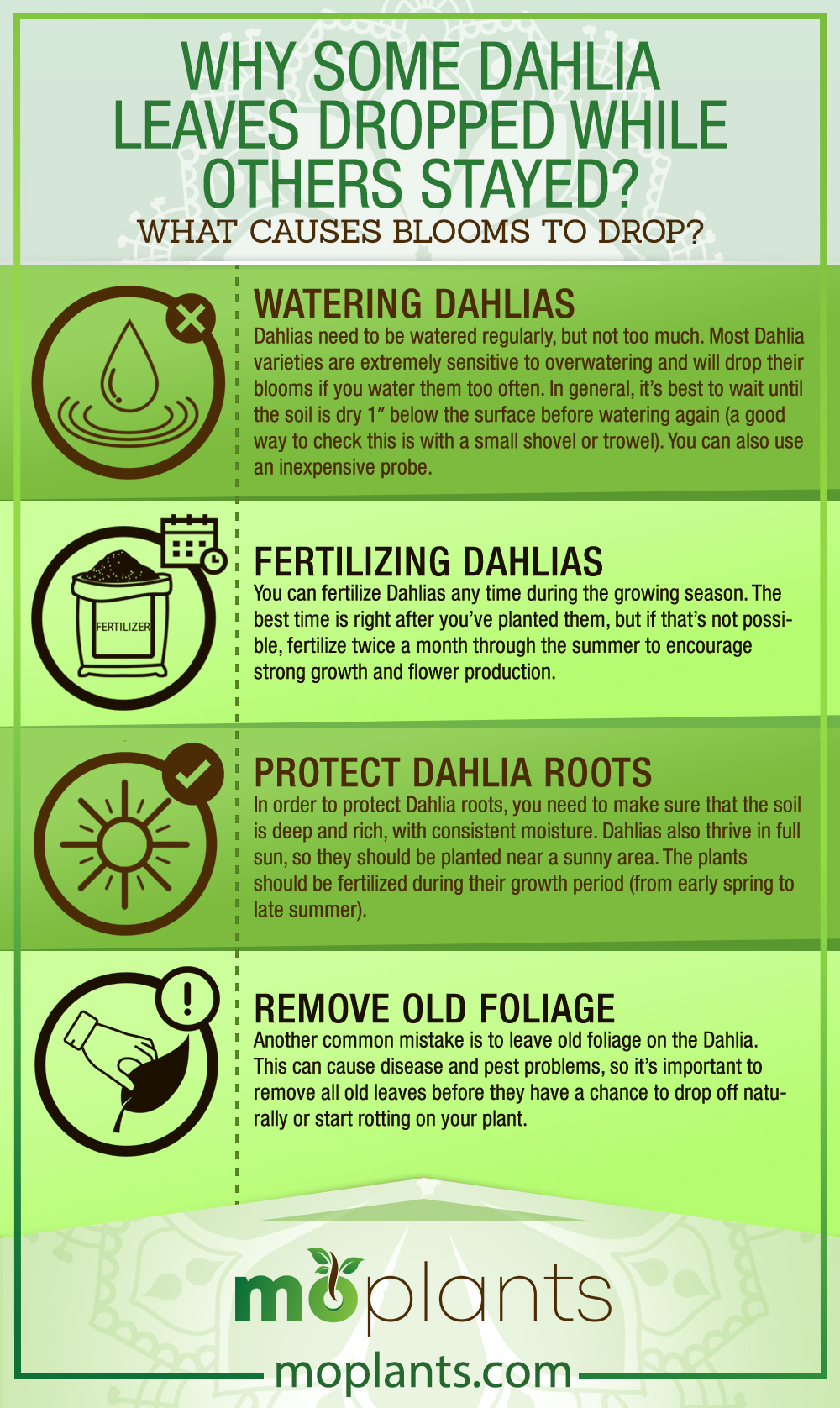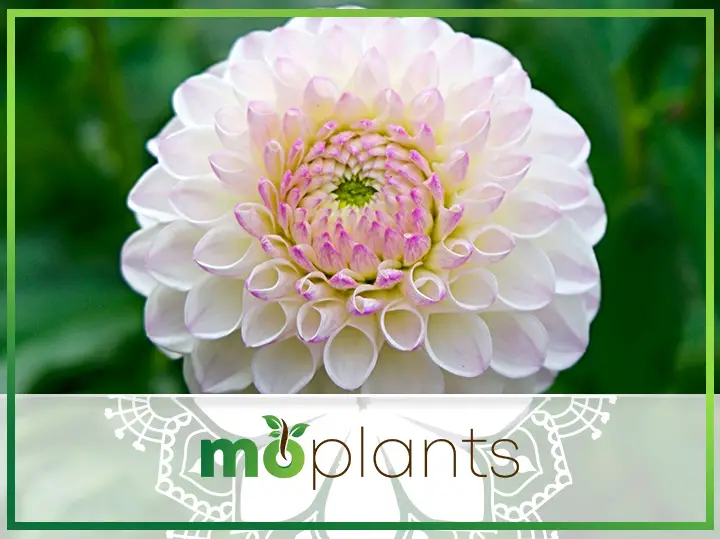Dahlias are flowers that can be grown indoors and outside, but for most people, it’s easiest to grow them in pots or planters. As with many other plants, one of the most common problems that Dahlia growers have is when their leaves start to drop off, and they don’t know why. To help you figure out what might be going on with your Dahlia, here are some possible reasons why this could happen:
Why Are The Leaves Dropping Off My Dahlia?
Dahlias are perennial plants, meaning they will come back year after year. They are heavy feeders and need plenty of water during the growing season. If the leaves are dropping off of your Dahlia, it is completely normal for this to happen. If you see leaves drop, your plant likely needs more fertilizer or water; if you’re seeing roots coming out from the bottom of your plant (called “root suckers”), that means there is too much nitrogen in your soil, and you should reduce the frequency of fertilization.
A Dahlia plant may be losing its leaves if it’s suffering from fungal diseases such as botrytis blight or powdery mildew. These diseases thrive in warm, moist environments like those found in greenhouses, where temperatures stay above 70 degrees F for long periods at night. This means even if you don’t live in an area where temperatures regularly reach these levels outside, keeping them below 80 degrees inside can help prevent fungal diseases from harming any part of your houseplants.
Watering Issues
If you’re not watering your Dahlia with the right amount, your plant is likely not getting enough water. The only way to ensure this is by testing the soil with a moisture meter. It’s important to remember that even if your plant isn’t getting enough water, the leaves may still drop because of other issues like insects or disease.
If you suspect that over-watering is causing your Dahlia’s leaves to drop, try giving it less water until the problem clears up—but always check with a professional before changing any treatment for your specific situation.
Poor Nutrition
If this happens, likely, your Dahlia is not getting enough nutrients. Dahlias are heavy feeders and need a lot of nutrients to grow healthy roots, stems, leaves, and flowers. Use a balanced fertilizer at the beginning of the growing season (March or April). Don’t overfeed them using too much nitrogen; phosphorus should also be kept in mind when fertilizing Dahlias. Finally, avoid using too much potassium and ammonium sulfate because these can lead to yellowing leaves on your plant.
Excessive Nitrogen Fertilizer
You may have overfed your Dahlia. The excess nitrogen in the soil can cause it to grow too fast, which leads to falling leaves. We recommend adding some compost or mulch around your plants as they grow taller and heavier, which will help them keep their leaves longer.
Transplant Shock
The most common cause of dropping leaves is transplant shock. The shock occurs because Dahlias are quite sensitive to being moved or transplanted, so make sure you don’t move your plants for at least a week after planting.
If you’re moving them from one part of your yard to another, dig up the whole plant and transport it as carefully as possible in a wheelbarrow or other container with good drainage holes. Don’t plant them again until they have completely dried out from this process and are no longer wet on the outside (you can always check by giving them a light squeeze). In addition, wait at least one day before watering again, even if the soil feels dry on top; otherwise, it’s easy for roots to get damaged when they have to deal with both sun and water at once.
It’s also important not to transplant into cold soil in fall or winter; if possible, wait till springtime when temperatures are already warmer than 50 degrees Fahrenheit (10 degrees Celsius). And don’t do it near windswept areas where gusts could knock over or damage delicate new growth.
When transplanting Dahlias into containers instead of the ground, try filling those pots with some moistened aged cow manure instead of the regular potting mix; this will help keep roots free from fungal diseases while they’re getting used to their new environment.
Fungal Disease
Fungal diseases are common in Dahlias. You can tell a fungus from a bacterial disease by the way the leaves turn brown and drop off. With bacterial diseases, the leaves turn yellow or white and fall off quickly. The plant will usually survive if you treat it with antibiotics.
To prevent fungal diseases, make sure that your soil drains well and that it isn’t too wet when you water your Dahlia plants (about 2 inches deep). Don’t let water sit on their roots for long periods of time; use drip irrigation or soaker hoses to avoid this problem. If you have an infected plant, remove all its infected parts immediately.
Don’t overwater your Dahlias, and don’t be harsh with them when transplanting them.
If you’re growing your Dahlias in a pot, make sure that the soil doesn’t dry out completely. Water them regularly and give them enough hydration to keep their roots moist, but don’t overdo it. Overwatering can cause root rot and other problems for Dahlias (and other plants).
It’s also important not to transplant your Dahlia when it is flowering or within a few weeks of doing so. Dahlias need time after they’ve finished blooming before they are moved; this will help prevent shock because the plant has already expended all of its stored energy on flowering. The best time to transplant is early spring (February through March), when temperatures are still cool, but there are plenty of days with sunshine ahead.
Infographic

How To Prevent Dahlia Leaves From Dropping
When Dahlia leaves are ready to drop, the plant can look quite sad. However, you don’t have to throw away your plant or its blossoms. Dahlias are full of personality and often bloom for weeks at a time. In order to ensure your plants continue to produce flowers, follow these steps:
What Causes Blooms To Drop?
There are a few things that can cause blooms to drop. The most common reason is not enough water, which could be due to the plant being in a location where they don’t receive enough rainfall or if you aren’t watering them regularly or deeply enough. If the leaves begin to wilt and curl, this is an indication that the plant isn’t getting enough water. Another reason for blooms dropping may be because of too much sunlight exposure on your Dahlia’s leaves, which can burn them and cause premature aging and death of the plant’s leaves (drying out).
Another reason Dahlia blooms might drop is if there is not enough nitrogen in their soil mixture—a symptom of this problem will show up as yellowing and wilting at their base with brown tips along their petals’ edges after blooming has occurred multiple times over time. This can also occur if your plants have been exposed to excess fertilizer before harvesting their first flower buds; too much fertilizer causes increased growth but leads directly towards leaf loss during flowering cycles.”
Watering Dahlias
Dahlias need to be watered regularly, but not too much. Most Dahlia varieties are extremely sensitive to overwatering and will drop their blooms if you water them too often. In general, it’s best to wait until the soil is dry 1″ below the surface before watering again (a good way to check this is with a small shovel or trowel). You can also use an inexpensive probe.
Fertilizing Dahlias
You can fertilize Dahlias any time during the growing season. The best time is right after you’ve planted them, but if that’s not possible, fertilize twice a month through the summer to encourage strong growth and flower production.
If you’re using an organic fertilizer such as compost or aged manure, use it at the rate of 1 cup per plant while they are actively growing. For chemical fertilizers like Miracle-Gro, apply it every two weeks starting in early spring until flowers appear.
Protect Dahlia Roots
In order to protect Dahlia roots, you need to make sure that the soil is deep and rich, with consistent moisture. Dahlias also thrive in full sun, so they should be planted near a sunny area. The plants should be fertilized during their growth period (from early spring to late summer).
Dahlias require protection from frost and insects. Frost can kill Dahlia leaves and stems, as well as flowers if they appear before the first frost. Insects such as aphids may also attack the plant’s leaves and stems.
Remove Old Foliage
Another common mistake is to leave old foliage on the Dahlia. This can cause disease and pest problems, so it’s important to remove all old leaves before they have a chance to drop off naturally or start rotting on your plant.
If you follow these tips, your Dahlias will continue to bloom for many weeks to come. Dahlias are relatively easy to grow and can be a great addition to any garden. They are also easy to grow from seed and make a wonderful gift. To prevent the leaves from dropping on their own, it is important that they receive proper sunlight and water.
Infographics

Our Final Thoughts
Most of the time, there is nothing to worry about if your Dahlias are dropping their leaves. But if you think it might be a problem, it’s best to check with a professional before you lose too many Dahlia blooms. Hopefully, this article has helped you understand why Dahlia blooms drop and what you can do to prevent it. If you follow our tips, then your Dahlias will continue to bloom for many weeks to come.

